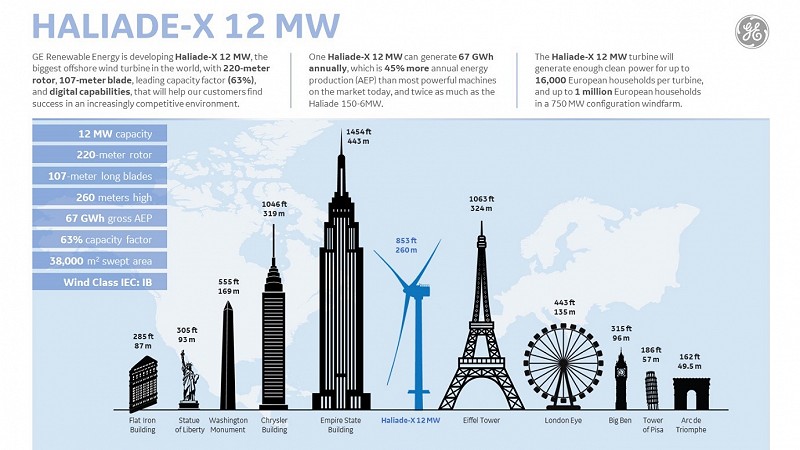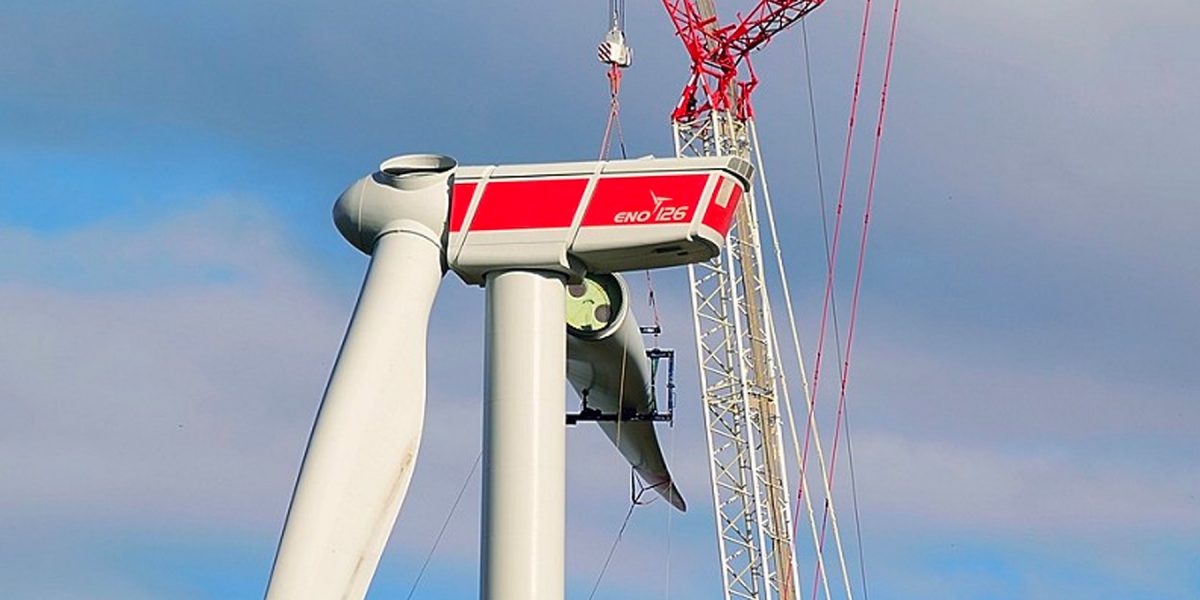Wind turbines may seem like a relatively new technology, but they have been around for a lot longer than you may think. From humble beginnings, they have evolved to be at the forefront of modern technology and are now recognised as a key driver in ensuring the future of sustainable development.
The advantages of wind turbines
Energy produced from wind turbines is an emissions free, renewable resource. It holds high economic value and possesses huge potential for the future, due to the amount of wind power that exists (20 times more than what the entire human population needs). Harvesting wind power is a clean, non-polluting way to generate electricity. Unlike other types of energy generation, it emits no air pollutants or greenhouse gases, and operational costs associated with wind power are also low. Turbines are located where the wind resource is optimal, often situated in remote locations. The wind turbines can then efficiently generate electricity, using the wind that propels the blades to generate energy, which can be used on-site or sold back to the grid.
Humble beginnings
The idea for the first renewable wind turbine came from Professor James Blyth, a Scottish engineer who worked at Anderson’s College in Glasgow, in 1887. Using accumulators developed by Frenchman, Camille Faure, Blyth began work in his garden, where he was eventually able to power the lights in his house. After this initial success, he offered power to surrounding houses, but the offer was turned down by his neighbours. Blyth did go on to supply power to a local asylum, but the concept of a wind turbine for electricity production failed to gather momentum at the time.
The turning point for wind turbine power came with the fuel crisis of the early 1970s, when governments were forced to consider alternative, more sustainable and efficient sources of energy, as it became apparent that fossil fuels would indeed run out in the future. During this time, most of the development originated from a NASA based research program, designed to find a utility-scale energy resource. By the 1980s, the State of California offered tax rebates for wind power, as governments started to try and promote cleaner sources of energy.
Modern advancements
From a starting point of limited design, and lack of popularity, wind turbines have now evolved in every regard. This can be attributed to the introduction of global initiatives to combat climate change, such as the Paris Agreement. Renewable energy is now growing exponentially, with wind energy leading the way. From 2000 to 2015, cumulative wind capacity around the world increased from 17,000 megawatts to more than 430,000 megawatts. In 2015, China also surpassed the European Union in the number of installed wind turbines, and continues to lead installation efforts. Industry experts predict that if this pace of growth continues, by 2050 one third of the world’s electricity needs will be fulfilled by wind power.
One such example of this evolution can be seen with GE Renewable Energy, announcing plans in 2018 for the world’s most potentially powerful offshore wind turbine – the 12MW Haliade-X. The manufacturer has pledged to spend $400 million on engineering, testing and supply chain development for the turbine over the next three to five years. It is currently bidding the Haliade-X 12MW for projects, with initial shipping expected in 2021, allowing for projects to be online starting in 2022. Wind Power Offshore recently reported on the 28th of June 2019, that one of the blades for GE’s Haliade-X 12MW made its first public appearance. The blades will be manufactured by LM Wind Power, acquired by GE in 2016, and will be the world’s largest blades to date – measuring 107m.

Final preparations are now being carried out for shipment of the blade ahead of the first prototype being installed at the Port of Rotterdam, this summer. It is thought that the turbine will produce 45% more energy than any other offshore wind turbine available today, and will be capable of generating up to 67GWh annually. The Haliade-X 12MW will have a nameplate rating 2.5MW above the V164-9.5MW’s, currently the largest capacity offshore wind turbine on the market.
The turbine will tower 260 metres over the ocean, making it more than five times the height of the Arc de Triomphe in Paris. It will have a 220-metre rotor and 107-metre blades. See the table below, for a size comparison between the Haliade-X 12MW turbine and some of the world’s most recognisable landmarks.

Based on wind conditions at a typical German North-Sea site, the Haliade-X will provide savings of an average of 26 million per 100MW, compared with GE’s current Haliade 150-6MW. The development of this turbine is symbolic of how rapidly the evolution of wind turbines has progressed over the last 40 years, and is quite literally a giant stride forward in the quest for a sustainable and renewable future.
Find out more about the technical side of turbine operation in our ‘How does a wind turbine work?’ blog.


